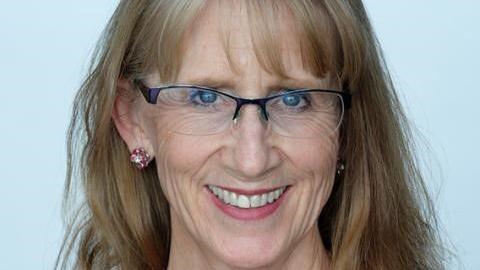The following is the opinion and analysis of the writer:
Mention climate change and you’ll likely get one of two reactions: panic, usually expressed as, “We need to do all the things right this instant!”, or despair, as in, “All is lost, and there’s nothing we can do!”
It’s easy to see why people might feel one of those ways — or both, on any given day. It’s been a rough couple of years.
But guess what? All is not lost, and we don’t have to do all the things. In fact, we can do one thing and make a huge difference: Simply call our political leaders and push for carbon pricing.
I am not an expert on pricing carbon, CO2 reduction or even how to make a layer cake that doesn’t woefully slant to one side. But I am an expert in finding people to explain complicated issues.
In this case, I found Jane Conlin and Ed Beshore, co-leaders of the Tucson Chapter of the Citizens’ Climate Change Lobby, a nonpartisan, volunteer-run climate advocacy group that focuses on a “fee and dividend” carbon-pricing model.
People are also reading…
Studies have shown that this method is the quickest and most likely way to get to net zero emissions by 2050. That emissions target — which also includes a target of 50% reduction in greenhouse gases by 2030 — is what experts say we must meet to keep global warming below 2 degrees Celsius (3.6 Fahrenheit) this century so we have a livable planet.
Beshore, a former University of Arizona astronomer who studied near-earth asteroids, jokes that he’s “obsessed with things that can destroy the earth,” which is why he’s interested in stopping global warming. Conlin is an avid outdoorswoman who used to own a Colorado sporting goods store and wants to save the outdoors she loves.
“The world is still a beautiful place in spite of climate change,” she said. “People need to get out there and see the beauty we’re trying to save.”
Nearly 75% of all U.S. CO2 emissions come from burning fossil fuels, according to the U.S. Energy Information Administration, and CO2 is the primary cause of global warming. This is where carbon pricing comes into play.
With fee and dividend, the government would levy a fee on companies producing fossil fuels of $15 per ton of carbon produced for the first year, and $10/ton every year thereafter until the aforementioned emissions target is reached. The revenue generated would then be returned to U.S. households by way of a monthly check (the “dividend.”) Because this model is so simple, Beshore said it can be implemented within a year.
The dividend would help families pay for the increase in fuel costs, primarily at gas pumps. (A $10 per ton fee would translate to about a 10-cent increase per gallon of gas.) Beshore said studies show that 60% of all households will break even or make money with this plan, and the remaining would benefit by having a good portion of their fuel increase covered with the dividend. A family of four, after a decade of fee and dividend, will end up receiving about $3,000 per year.
Conlin explained that the fee will be assessed at mines, wellheads and borders, with the latter consisting of a tariff on imports from countries without carbon pricing. That tariff will increase American companies’ competitiveness because imports from places such as China and India don’t have a price on carbon and the tariff would pressure them to enact one. American exports to countries without carbon pricing will have their carbon fee refunded by the U.S. government.
Conlin and Beshore believe politicians now recognize climate change is real and many quietly support carbon pricing. But recognizing the problem means nothing if you can’t win elections, and many are afraid going big on climate will cost them at the ballot box.
That’s where we come in, folks. If you’re concerned about global warming, call your elected officials monthly and tell them you’ll vote for them if they back carbon pricing. Be specific: “I’m alarmed about climate change and support you taking action to stop it by putting a price on carbon so we can reach the goal of net zero emissions by 2050.” Then invite your friends and family to do the same.
The science says things are bad, and the science is right. To wit: Conlin’s husband wanted to go fly fishing last summer, but the Idaho and Montana streams he would normally fish were closed because they were too warm to support fly fishing. Read that again: Too warm to support fishing. (As an aside, the national group Trout Unlimited fully supports CCL’s fee and dividend plan.)
Most of our leaders aren’t blind, and they know carbon pricing is simple, quick and effective. But they’re held hostage by a small, super-rich, vocal minority tied to the fossil fuel industry. Let’s help them be brave enough to do the right thing. Because, honestly, the only thing we know for certain is that if we do nothing, everything will get worse. We must neither panic nor despair. Instead, we must act. Make the call.
Renée Schafer Horton is a regular Star contributor. Reach her at rshorton08@gmail.com. Visit Citizens’ Climate Change Lobby at http://tucsonccl.com/ and learn how to contact your elected officials at https://www.usa.gov/elected-officials/
Credit: Source link





























